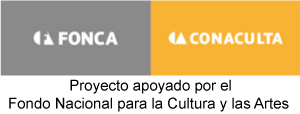Proyecto LA / LA Project
The LA Project # 5. The conference and other activities
Escrito por Mónica MayerWe had set the dates of our stay in LA to coincide with the two-day conference LA / LA. Place and Practice which would bring together many Chicano, Latino and Mexican artists to discuss the participation of these different communities within the art world in the region. We wanted to hear what they had to say and we knew many of our friends would be participating, so we signed up immediately.
The day before we left for LA I received a mail from Bill Kelley Jr. inviting me to participate in a panel called “Naming: Criticism and Case Studies” at the conference because one of their panelists was unable to attend. I was terrified. Obsessive as I am, I usually prepare my participations well in advance, but I accepted because I really wanted to be part of this conversation. Since I am completely ignorant about how criticism and the press have dealt with Latino artists in the region, I decided to talk about something I do know about: inSite as seen by art writers in Mexico City. 1992 – 2005. Lucky for me, installation biennials is one of the themes we have compiled and separated into a category in our ample Pinto mi Raya newspaper article collections, so it was very easy to find the material, take it with me to LA and work on the talk in the spare time between performing, visiting archives and places, doing research and meeting friends and colleagues.
You can see the material I used to illustrate the talk here, but I will summarize my participation: although it was surprising that so many critics from Mexico City wrote about the inSite because newspapers usually don’t cover their travel expenses and they pay so little there is no way critics can afford it, it was more surprising how touristy many of their remarks were, both in terms of how impressed they seemed by things like the traffic in the border and how unaware or indifferent they were about the absence of Chicano and Latino artists.
It was wonderful to attend this conference and learn more about different past and present projects in the region. We listened to many people we know and respect, such as Sandra de la Loza, Raquel Gutiérrez, Nao Bustamante, Ricardo Dominguez, Rubén Ortiz-Torres, Rafa Esparza, Mariana Botey, Lucía Sanromán, Teddy Cruz, Carribean Fragoza and Romeo Guzmán and others we had heard of but only met, such as Sharon Mizota, Luis C. Garza, Ondine Chavoya, Patricia Valencia, David Avalos and Carmen Argote, among others. You can read a review by Selene Preciado here.
The part of our visit to L.A. to review and extend the materials of our archive was full of visits to friends, family and colleagues.
We met Amelia Jones because she kindly accepted to write for the catalogue of my upcoming exhibition at the Museo Universitario Arte Contemporáneo (MUAC) in Mexico City on February 2016. In the publication we will be sharing a series of letters we have since been writing to each other about documentation, art, archives, feminism, class and context.
We saw Victor’s cousins Olivia, Marta y Lourdes, as well as Alicia, their mother, whom he had not seen in 40 years. We also saw my cousin Daniel and his wife Vicky in San Diego, whose conversations are always amazing. I wonder if there is anyone in Mexico who doesn’t have a cousin in the U.S.
We had dinner with our dear friends Father Vincent Schwahn and his husband Juan José Colin and talked “largo y tendido” about communities in LA, about social change, about family, about Mexico and about life. It was a wonderful evening.
We were also had the pleasure of enjoying the hospitality and meeting with friends and colleagues such as Ken Ehrlich, Janet Sarbanes, Sandra de la Loza, William Acedo, Jerri Alyn, Cheri Gauke, Sue Maberry, Cindy Kahn, Carmen Cebreros. It was really quite wonderful.
The visit was also full of museums and galleries: LACE, MOCA, 17th Street Art Center, LACMA, the Hammer and the Norton Simon. Professional adictions.
One of our most interesting activities during the residency was attending the final review sessions at OTIS. It was like meddling into someone else’s conversation. The student’s presented their master's projects, but not as they would to someone who had not seen their work before which is what happens at professional exams in Mexico, but, as it was, to their teachers who had followed their process for a long time. In this kind of situation I would usually keep quiet and try to understand what was going on, but we were there to participate, so we awkwardly jumped into it. It was great to see the work of our young colleagues, particularly the pieces that were more politicized, dealing with issues of violence against women (Carol Zou) or what seems to be a really complicated situation: student’s university loans (Noé Gaytan).
The LA Project # 6. The talk, the opening and the conclusion
Escrito por Mónica MayerThe opening took place on May 9, and it was preceded by an ample introduction of our work presented by Selene Preciado and a talk facilitated by Cheri Gaulke which you can see here.
The opening was a lot of fun because several friends from my time at the Woman’s Building came by, among them Barbara Margolies, Vanalyne Green, Nancy Buchanan and Cyndi Kahn. They were fleeting greetings. Short visits to memories of moments shared in the past. They are relationships that were frozen in the past but could be rebuilt in the present.
The show closed on September 6. All we have to do now is wait for the materials to return to our archive.
The invitation: a new document for the Pinto mi Raya Archive





